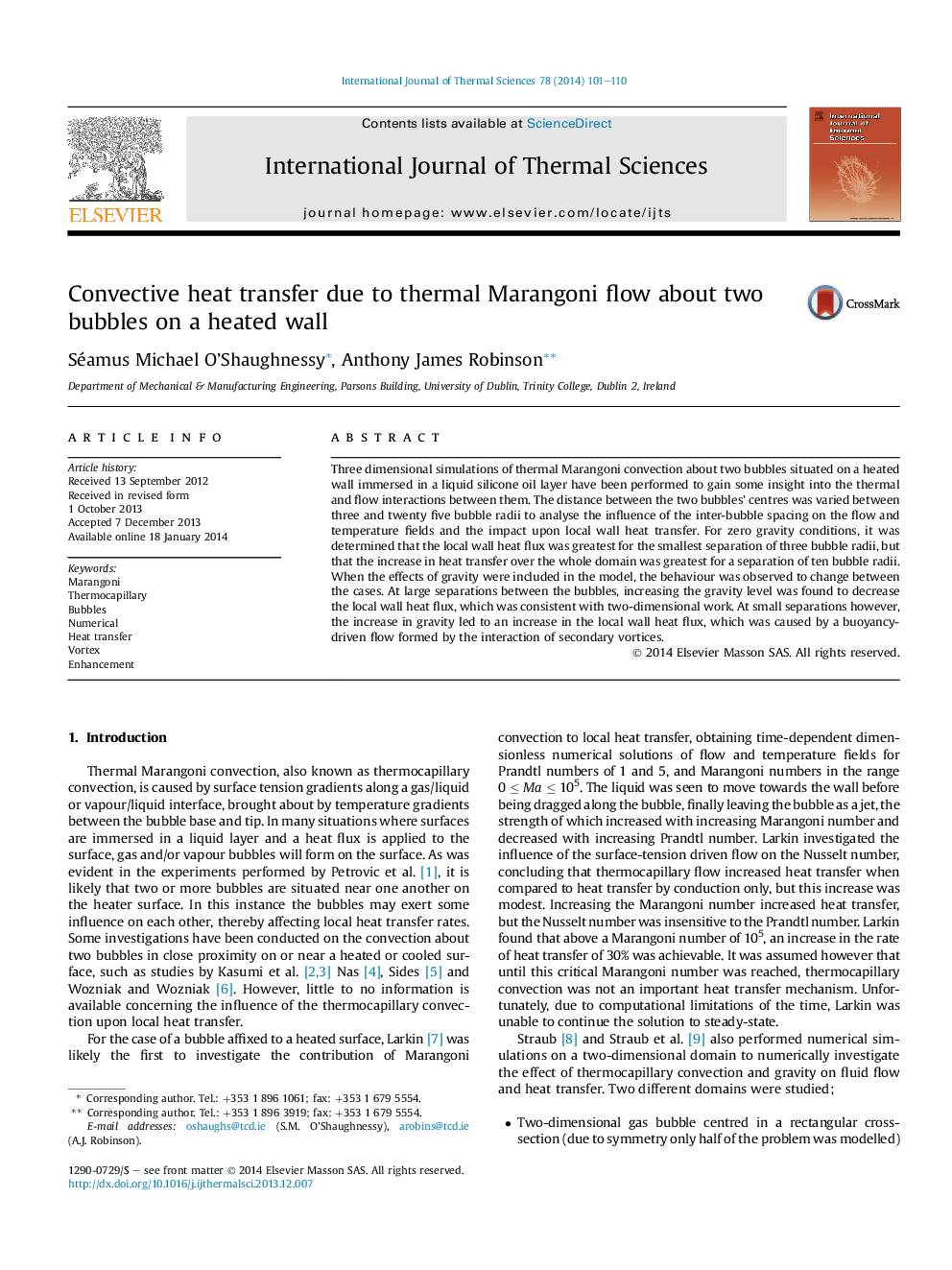| Article ID | Journal | Published Year | Pages | File Type |
|---|---|---|---|---|
| 668398 | International Journal of Thermal Sciences | 2014 | 10 Pages |
•Numerical simulations of Marangoni convection about two identical bubbles are performed.•The influence of the separation distance between two bubbles is investigated.•The opposing effects of thermocapillary and gravitational forces are discussed.•At large inter-bubble separations, increasing gravity decreases the peak wall heat flux.•At small inter-bubble separations, increasing gravity increases the peak wall heat flux.
Three dimensional simulations of thermal Marangoni convection about two bubbles situated on a heated wall immersed in a liquid silicone oil layer have been performed to gain some insight into the thermal and flow interactions between them. The distance between the two bubbles' centres was varied between three and twenty five bubble radii to analyse the influence of the inter-bubble spacing on the flow and temperature fields and the impact upon local wall heat transfer. For zero gravity conditions, it was determined that the local wall heat flux was greatest for the smallest separation of three bubble radii, but that the increase in heat transfer over the whole domain was greatest for a separation of ten bubble radii. When the effects of gravity were included in the model, the behaviour was observed to change between the cases. At large separations between the bubbles, increasing the gravity level was found to decrease the local wall heat flux, which was consistent with two-dimensional work. At small separations however, the increase in gravity led to an increase in the local wall heat flux, which was caused by a buoyancy-driven flow formed by the interaction of secondary vortices.
